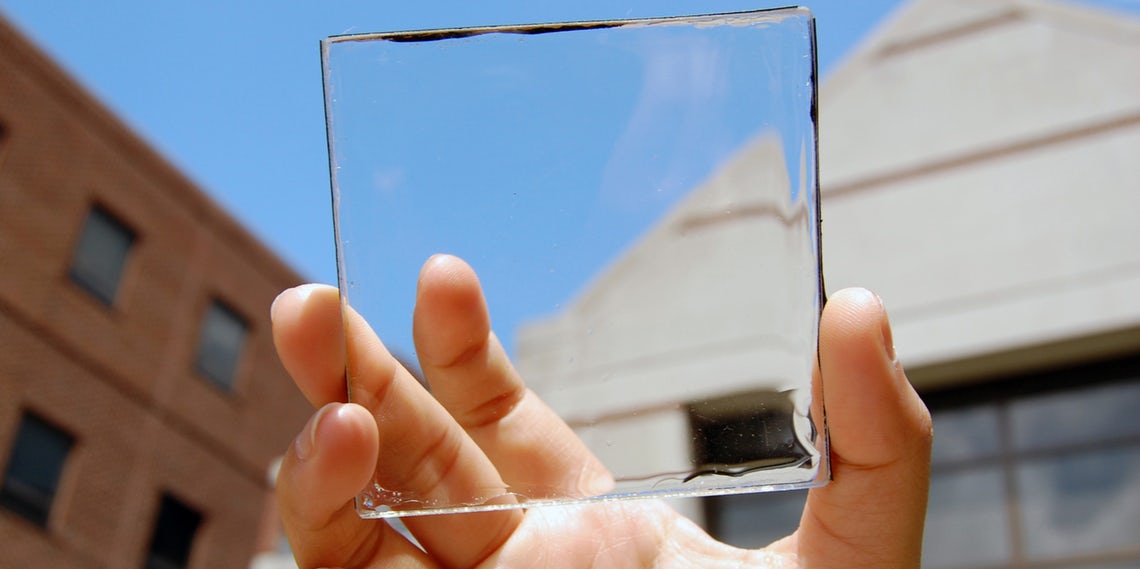
Find innovative materials for your next project through Architizer’s new community marketplace for building-products. Manufacturers: Check out the latest construction leads and sign up now.
The beginning of civilization as we know it really started with a series of material innovations; the Bronze Age and the Iron Age set us on the path to where we are now, after all. So it makes sense that the history of architecture is also deeply engrained in technological developments of the time. Skyscrapers would have never reached such heights without developments in steel, for example, and façades would have never slimmed down without thin-shell concrete.
In a time that is so buzzing with technological development, we cannot help but salivate a little at the material prospects for architecture that are now emerging. Read on to see what drastic innovations may be transforming the built environment in the near future.
A large crack down the chimney of Corbusier’s La Tourette is a typical challenge that modernist concrete icons pose for preservationists. From Walking Through Le Corbusier by José Baltanás (London: Thames and Hudson, 2005), via Metropolis
The greatest downfall of concrete — the world’s most widely used building material — is unavoidable cracking caused by exposure to water and chemicals. Butrecent developments by a team in the Netherlands extends the life of this popular material by infusing concrete with bacterial spores that patch up cracks when water seeps through. This amazing innovation has now begun to be used in real-world projects, including a set of self-healing water tanks in the Netherlands.
Nanotechnology is pushing materials science beyond the limits of what once seemed impossible. When combined with ultra-high-strength concrete, nanomaterials such as Carbon Nanotubes (CNTs) create a material so strong in both tension and compression that steel rebar is no longer needed in construction, therefore expediting the building process. The possibilities don’t stop there. Other developments include ultra lightweight (super-strong) materials as well as another form of self-healing concrete.
Nanotechnology could also greatly improve the efficiency of solar panels, making it possible to embed a single panel with a huge array of individual solar cells. This would greatly reduce the cost of the technology, finally making solar energy a viable alternative to fossil fuel. Other explorations in making solar energy cheaper include dye-sensitized solar cells (DSSCs), DuPont’s silicon ink component and fully transparent solar panels that could replace standard glass in windows across the world.
Whether it’s climate change or simply daunting energy bills, nearly everyone is demanding more efficient, greener new buildings. Insulation is therefore a hot topic, especially when it comes to aerogel — not only one of the lightest materials available, but also one of the highest insulators (it also held 13 other Guinness World Records in 2011.) Originally developed by NASA, a commercial spin-off has emerged in the form of Thermablok, specifically designed for residential and commercial uses.
Though the idea of a “sweaty” building sounds rather … unpleasant … this new material from researchers at ETH-Zurich that aims to make your building perspire is anything but. The rooftop material absorbs water when it rains and only releases it when the heat is raised to a certain temperature. The resulting evaporation will in turn keep the house cool — much like the process of human sweat.
Stopping the spread of disease in a confined space such as a hospital is no easy task, involving continuous disinfecting and even the occasional architectural reorganization. But now a team from Harvard is investigating an alternative that would produce a “slippery liquid-infused porous surface” (SLIP) that would let bacteria slip right off. In addition, the material could ward off dust, ice and graffiti, making it a tantalizing prospect to industries outside of just health care.
Similar to our obsession with diamonds as the “hardest material on earth,” our fascination with the naturally occurring material of silk never seems to abate. Stronger than steel, weight-for-weight, the super-fine material has the added bonus of being super-flexible. Scientists have long tried to synthetically engineer the material (to give the humble silkworm a bit of a break), with little progress. But a team from from the MIT Media Lab has found a way to control silkworms to do their bidding to create a silk pavilion — basically, printing with worms.
Avots: Architizer